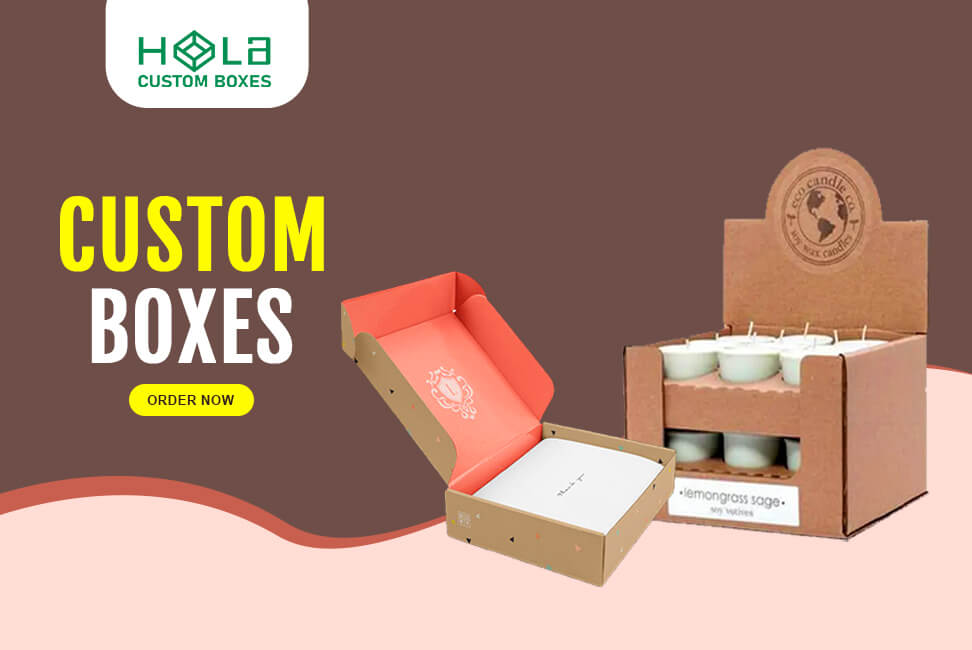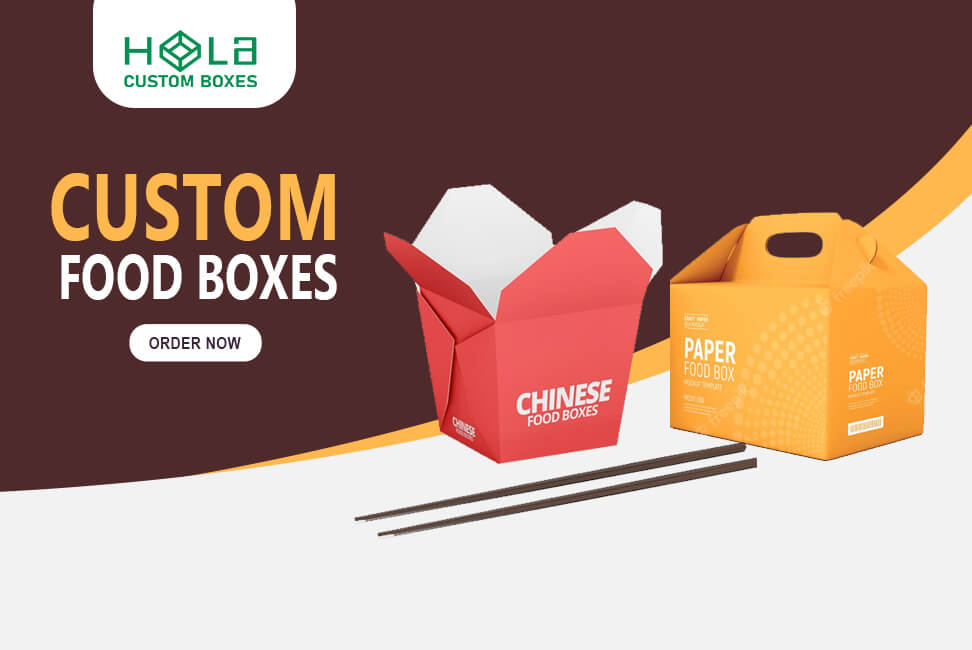Trends In Custom Packaging: What To Expect In 2026
2025-12-11 13:54:18
Did you know that by 2026, the global custom packaging market is projected to reach $45.7 billion? That's an astounding figure, highlighting the growing importance of packaging in today's consumer-driven world. As we approach this exciting future, it's crucial to stay ahead of the game and understand the emerging trends that will shape the industry.
In this article, we will explore what to expect in custom packaging by 2026.
Firstly, sustainability will be at the forefront as consumers become more environmentally conscious. The demand for sustainable materials and eco-friendly packaging options will soar, driving innovation towards greener solutions.
Additionally, personalized and interactive packaging experiences will continue to captivate consumers. Brands are finding creative ways to engage with their audience through customized designs and unique interactions.
Moreover, innovative packaging and IoT integration will revolutionize product delivery and tracking systems. This technology enables real-time information sharing between products and consumers, enhancing convenience.
Furthermore, innovative shapes and designs will set brands apart from their competitors. Expect eye-catching visuals that grab attention on store shelves.
Lastly, enhanced product protection and safety features will ensure that goods arrive intact while addressing consumer concerns about contamination or tampering.
So buckle up for an exciting journey into the world of custom packaging as we delve into transformative trends just around the corner in 2026!
Key Takeaways
- Growing importance of sustainability in the custom packaging industry
- Rise of biodegradable alternatives and eco-friendly options in packaging materials
- Integration of innovative technologies like augmented reality and QR codes in packaging
- Enhanced product protection and safety measures with advanced tamper-proof technology and traceability features
The Rise of Biodegradable Packaging Materials
As sustainability continues to shape the future of packaging, 2026 is seeing a substantial shift toward biodegradable materials in the custom packaging industry. With eco-conscious consumers driving demand, businesses are embracing plant-based plastics, compostable paper, and other easily decomposable alternatives to reduce environmental impact. These materials not only break down naturally but also position brands as responsible and forward-thinking in their packaging approach.
Minimalist Designs for Maximum Impact

Alongside biodegradable materials, minimalist packaging is emerging as a key trend. By focusing on functionality and eliminating unnecessary elements, companies can reduce material use while enhancing the customer experience. Clean, simple designs that prioritize ease of use over excessive branding resonate with modern consumers who value both aesthetics and sustainability. Embracing these eco-friendly packaging options allows brands to meet environmental goals while staying in tune with evolving market expectations.
Ask ChatGPT
Personalized and Interactive Packaging
With an emphasis on creating unique and engaging consumer experiences, personalized, interactive packaging is set to revolutionize how products are presented to customers by 2026. Brands are recognizing the power of customized branding to capture attention and build a strong customer connection.
By incorporating innovative technologies, such as augmented reality and QR codes, packaging can come to life with interactive features that let customers engage with the brand in exciting new ways. Imagine a cereal box that reveals a hidden message when scanned or a skincare product that offers personalized skincare tips through an app. The possibilities for customer engagement are endless.
In addition, personalized packaging creates a sense of exclusivity and makes customers feel valued, fostering brand loyalty. Get ready for a future where every package tells a unique story tailored just for you!
Smart Packaging and IoT Integration
Imagine the excitement of opening a package that not only delivers your product but also connects you to a world of possibilities through innovative packaging and seamless IoT integration.
Innovative packaging applications are revolutionizing how we interact with products, creating a personalized, interactive experience like never before. With IoT in the packaging industry, products can now communicate with consumers, providing real-time updates on inventory levels, expiration dates, and even offering personalized recommendations based on individual preferences.
This integration allows for a more efficient supply chain management system and enhances customer satisfaction by delivering a tailored experience. From smart labels that track temperature-sensitive items to connected packaging that detects tampering or provides nutritional information, the possibilities are endless.
In 2026, expect to see an increase in innovative packaging solutions and further integration of IoT technologies in the packaging industry.
Innovative Shapes and Designs Of Custom Product Boxes
.jpg)
Step into a world of creativity and innovation as you explore the captivating realm of packaging, where unique shapes and designs captivate your senses and elevate the unboxing experience to new heights.
In the ever-evolving landscape of custom packaging, brands are constantly seeking new ways to stand out from their competition.
One trend that's gaining momentum is the use of innovative shapes and designs. From whimsical curves to geometric patterns, these eye-catching packages not only protect the product inside but also serve as a powerful tool for creative branding.
By incorporating unique shapes and designs into their packaging, brands can create a memorable customer experience that leaves a lasting impression. Whether it's a sleek cylindrical tube or a playful pyramid-shaped box, these innovative designs add an element of surprise and delight to the unboxing journey, making it an unforgettable moment for customers.
Enhanced Product Protection and Safety Features In Custom Boxes
By incorporating advanced safety features and enhanced product protection measures, brands can ensure that their packaging not only showcases creativity but also prioritizes the security and well-being of the product throughout its journey.
In today's competitive market, product security is paramount for businesses to gain consumer trust and maintain brand integrity. To address this concern, custom packaging trends in 2026 are expected to focus on innovative tamper-proof technology that provides an extra layer of protection against unauthorized access or tampering. Some key advancements in this area include:
Innovative sensor technology: Packaging equipped with sensors that detect any changes in temperature, pressure, or light exposure, alerting consumers if the product has been compromised.
Tamper-evident seals: Custom packaging designs featuring unique seals that provide visible evidence if the package has been opened or tampered with.
Traceability features: Incorporating QR codes or RFID tags on packaging to allow consumers to track the product's journey from manufacturing to delivery, ensuring its authenticity.
These enhanced safety features not only protect products from theft or contamination but also provide consumers with peace of mind when purchasing goods.
Frequently Asked Questions
What are the current challenges and limitations in using sustainable materials for custom packaging?
Using sustainable materials for custom packaging presents challenges. For instance, some eco-friendly options may be more expensive or lack durability. However, like a seedling breaking through concrete, solutions are emerging to overcome these sustainability challenges.
How can personalized and interactive packaging enhance the overall customer experience?
Personalized marketing and interactive packaging branding can significantly enhance the overall customer experience. By creating a unique and engaging connection, customers feel valued and connected to the brand, ultimately leading to increased satisfaction and loyalty.
What are the potential risks or drawbacks associated with integrating innovative packaging and IoT technology?
When integrating innovative packaging and IoT technology, it's essential to consider potential security risks and data privacy concerns. According to a recent study, 67% of consumers worry about their personal information being compromised through connected devices.
How can innovative shapes and designs in custom packaging help brands stand out in the market?
Innovative packaging shapes and interactive designs can help brands stand out in the market. By using sustainable materials and personalized packaging, you can attract consumers while also considering smart packaging risks and product protection factors.
What are the key factors to consider when implementing enhanced product protection and safety features in custom packaging?
When implementing enhanced product protection and safety features in custom packaging, keep in mind that 48% of customers feel safer purchasing products with added security measures. Enhanced functionality can boost consumer confidence, but the associated costs should also be considered.
At Hola Custom Boxes, we transform everyday packaging into a powerful brand statement. Our French Fry Boxes are more than just containers—they’re crafted to showcase your product with style, durability, and eco-friendly innovation. Designed with customizable shapes, vibrant graphics, and premium materials, these boxes elevate the customer experience while reinforcing your brand identity. Whether you’re serving fast food or gourmet fries, our packaging ensures your product stands out and leaves a lasting impression. Discover how our creative solutions can boost your brand presence at Hola Custom Boxes.
